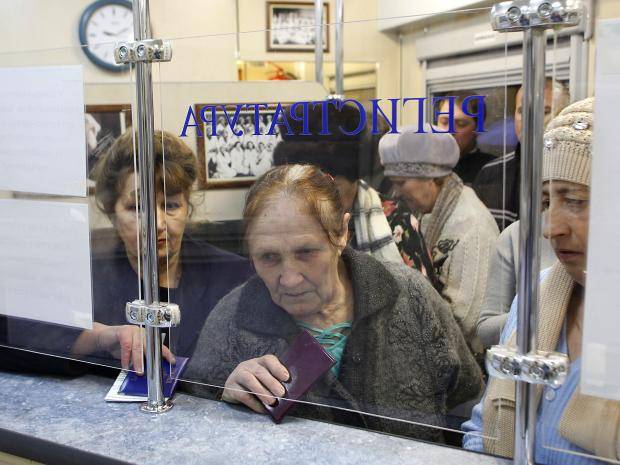
Only If All Russians Become Immortal Could Putin’s Demographic Projections Be Realized
Publication: Eurasia Daily Monitor Volume: 15 Issue: 36
By:

Russia has little hope of boosting its population through increasing the number of births—the size of the child-bearing cohort is rapidly declining, and preferences for smaller families are growing. In light of this, Vladimir Putin has begun to claim remarkable progress in reducing death rates as a way of ensuring that the country’s population will grow. But demographers say that the only way his rosy projections could be realized is if Russians stopped dying altogether—naturally, an impossibility (Rosbalt, March 3). As a result, Russia’s population will continue to decline, especially if Moscow persists with cutting back on the number of immigrant workers, whose presence has been somewhat compensating for this Russian decline.
In his March 1 address to the Federal Assembly (see EDM, March 1, 5), Putin presented a picture quite at odds with reality, Aleksandr Zhelenin of the Rosbalt news agency says. The Kremlin leader claimed that thanks to his government’s “active support of the family, mothers and children, we have been able to stop negative demographic trends and achieve both a growth in the number of births and a reduction in mortality” (Kremlin.ru, March 1). But the numbers, even from the notoriously unreliable Russian State Statistical Administration, Zhelenin contends, do not support Putin’s claims (Rosbalt, March 3).
Following 20 years of massive losses following the collapse the Soviet Union, Russia experienced a slight uptick in the number of births in 2013 and 2014. But then the decline resumed: there were 3,200 fewer babies born in 2015 compared to in 2014, and 200,000 fewer in 2017 compared to the number in 2016. Demographers project a continuing growth in the size of the decline in the number of births over the next decade or more. Not surprisingly, in a country that often equates size with greatness, the new figures are not something any Kremlin leader would want to focus on. Yet, as Zhelenin points out, Russia’s population has declined from 148 million in 1991 to 130 million now, not counting immigrants and the 3 million residents in occupied Crimea (Rosbalt, March 3).
Confronted by this reality in the number of births, Putin, perhaps unsurprisingly, has chosen to focus on reductions in the number of deaths. According to official statistics, they have fallen from 1.9 million in 2015 to 1.8 million in 2017. In his address, the Kremlin leader took full credit for this: “In recent years,” he said, “the rates of growth of average life expectancy in Russia have been among the highest in the world. We have been able to achieve this. Life expectancy has increased more than 7 years and reached 73 years. But this, of course, is insufficient. Today we must put before ourselves the goal” of exceeding 80 years—as Japan, France and Germany have done (Kremlin.ru, March 1).
That would be wonderful, Zhelenin says; but there are reasons to doubt that official statistics are correct and that “we will soon stop dying altogether.” For one thing, death rates track with birth rates, and if the overall population is declining, so too will numbers of deaths. But even more significantly, Russia under Putin has not taken any necessary steps in the three areas that demographers say are key to reducing mortality rates and increasing life expectancy over the long haul. Instead, Putin’s policies have resulted in declines in the Russian standard of living, declines in access to medical care, and no serious declines in consumption of alcohol and tobacco (Rosbalt, March 3).
Even Putin was forced to admit that more Russians are living in poverty now than did a decade ago, but the number he offered dramatically understates the problem: He claimed 20 million Russians now live in poverty, which is roughly one in every seven in the population. However, the government statistics office, Rosstat, shows that 43 percent of Russians live on less than 20,000 rubles ($340) a month. That is a true measure of poverty; and using it, one is forced to conclude that not 20 percent but 43 percent of the population—or just under half—are now poor, Zhelenin argues.
Putin’s so-called health “optimization” program has undercut the possibilities for improving life expectancy for a long time to come. According to the latest “Russian Statistical Annual Report,” the number of hospitals in Russia fell between 2000 and 2016 from 10,700 to 5,400. During this same period, almost all nurse stations in villages were closed and half of the approximately 10,000 smaller cities in Russia no longer have a hospital. Indeed, and in a measure of how Putin has proceeded, there are virtually no nurses left even in Moscow schools.
And as for alcohol and tobacco, despite claims by Putin and the Russian government, Russians’ consumption of these harmful products remains “one of the highest in the world.” Spending on both continues to grow, and consumption of them is responsible for “about 60 percent” of all deaths in the Russian Federation because of their contribution to heart attacks and cancers.
Thus, Zhelenin concludes, “today, there are no objective causes for the reduction in death rates in Russia” that Putin claims. And “if statistics became more realistic” and the Kremlin’s use of them more reliable, “then the demographic indicators of the Russian Federation would become much more depressing than they are” (Rosbalt, March 3).



